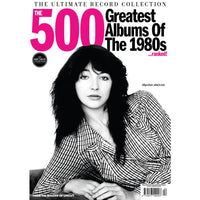- Description
As the 1980s went on, the British television programme Top Of The Pops developed a split personality. On the one hand it was a place of forced jollity and occasional subversion, as mainly middle-aged Radio 1 disc jockeys interacted uncomfortably with telegenic audience members, and introduced pop hits. As the decade continued, however, it became something more like a territorial prize in a stealthily-conducted conflict.
As the 1980s went on, the British television programme Top Of The Pops developed a split personality. On the one hand it was a place of forced jollity and occasional subversion, as mainly middle-aged Radio 1 disc jockeys interacted uncomfortably with telegenic audience members, and introduced pop hits. As the decade continued, however, it became something more like a territorial prize in a stealthily-conducted conflict.
As you’ll read in our latest issue, as an indicator of the health of music in the 1980s, both positions were important. On one side, with chart smashes by the likes of Adam and The Ants, ABC and the Specials, young viewers witnessed the growing sophistication of music to have emerged from punk at the end of the 1970s. Musicians like Scritti Politti and the Human League, meanwhile, used their new post-punk liberty to build gleaming and relatable modernist pop structures.
The same, on occasion, went for the presenters. In 1982 the alternative DJ John Peel presented the show. “Soft Cell…,” he said as if unable to process how far everyone had come since “Last time I saw them, it was at a rather squalid gig in Leeds. Now they’re on Top Of The Pops!”
Come the mid to late 1980s, there were rumblings from beneath this glossy surface. While one section of musical society had embraced aspirational “new pop”, others proudly disdained synthesisers, bright clothing and any kind drumkit that had to be played with a metal antenna. Whenever the Smiths appeared on the show, (or, as on November 23rd, 1989 when The Stone Roses and the Happy Mondays were both on the same edition) it felt as if some kind of blow had been struck against the mainstream empire.
As Go-Betweens co-founder Robert Forster explains in his far-reaching introductory interview with Peter Watts, part of this was down to the influence of the 1960s – a decade ignored by the mainstream 1980s, but beyond it, which helped fuel a whole underground musical society, “indie”, and occasionally burst through to a wider audience.
Publisher: Kelsey Media
Page Count: 122pp
Size: 8.25 x 11
Notes: perfect bound, full color, imported from the UK
Date of Publication: March 20, 2025


